
8 minute read
Regenerative construction
Alan Langlois inspects the quality of the material required for concrete production.
The concept of ‘regenerative agriculture’ has now become fairly familiar; ‘regenerative construction’ is still an area for pioneers. In Jersey, the leading pioneer is Alan Langlois of AAL Recycling. He spoke to Alasdair Crosby
Advertisement

What is RURAL magazine doing, sniffing about the operations base of AAL Recycling Ltd?
Its location, at the far end of the La Collette road that takes in the Recycling Centre and ‘Green Waste’ is an extensive facility - mountains of glass, rubble and construction waste. But it’s not at all ‘rural’ - it’s about as urban and man-made as you can get. No cows, grass or crops to be seen anywhere.
The clue, of course, is in the name, ‘AAL Recycling’. The company is doing its bit - as a pioneer in construction industry recycling and in minimising waste from both commercial and domestic waste products. ‘People are talking about the ‘circular economy’,’ said the managing director, Alan Langlois. ‘Broadly speaking, it can be summed up as Reduce, Reuse, Recycle. As far as the construction industry is concerned, that sector is one of the world's largest waste generators. The notion of a ‘circular economy’ is a helpful solution to diminish the environmental impact of the industry. For example, end-of-life buildings can be deconstructed, so creating construction elements that can be used for creating new buildings - as well as freeing up space for new development.’
So much for the philosophical overview. What is the practical application of the ‘circular economy’ in Jersey for his company?
“We are
Set concrete.
Segregated waste sourced from the demolished Fort d’Auvergne Hotel.
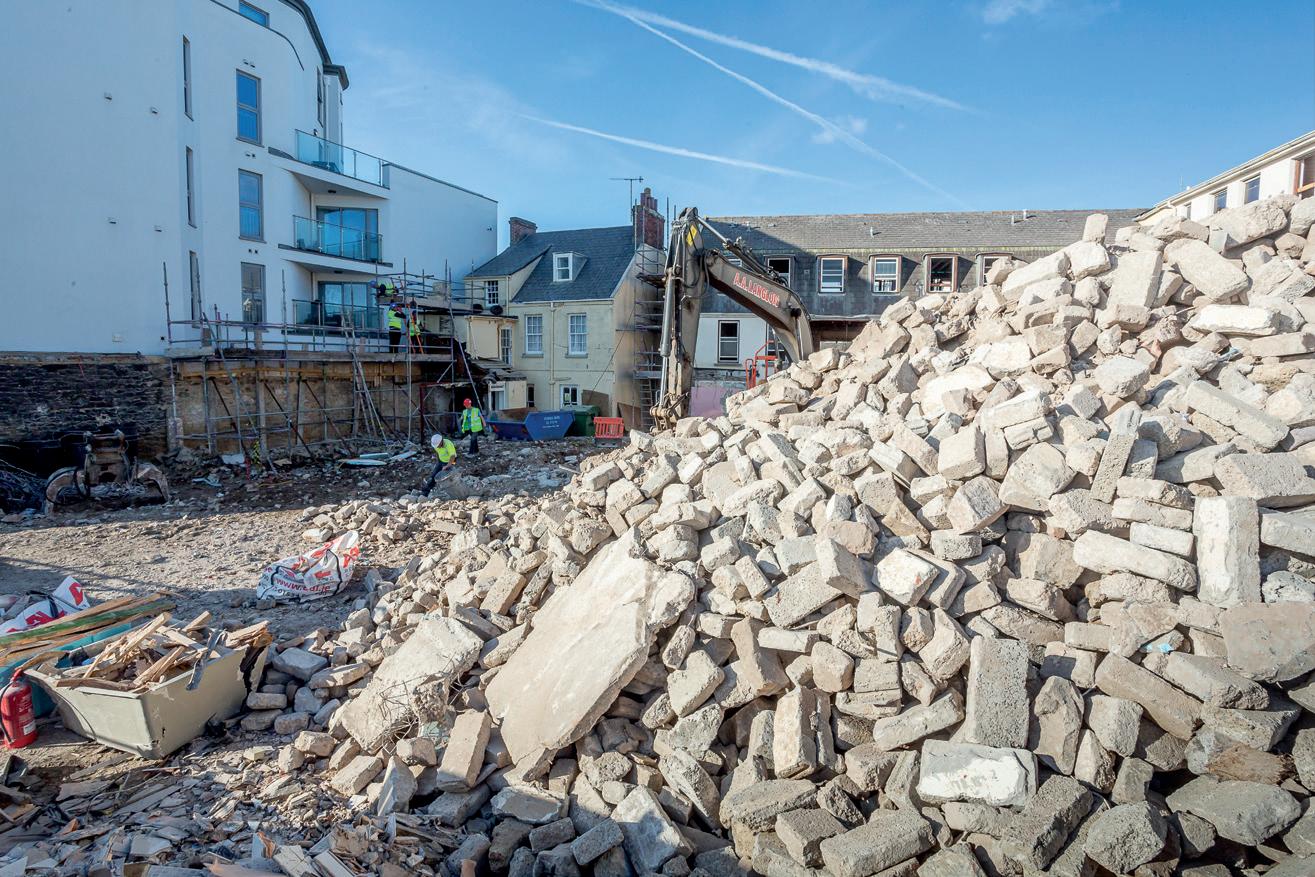
‘We are indeed a ‘circular economy’ company. When buildings are demolished, we take the rubble that would otherwise go to landfill - clean it, crush it, and produce lots of quality assured products that can be sold back to the building industry. A case in point is the Fort d’Auvergne Hotel that is being demolished at the moment. All that rubble is coming to us.
‘Once, all the building rubble would have gone to landfill. But the Island is almost at full capacity for that. We can use the rubble to produce aggregate from the crushed stone, which is a component of concrete and asphalt, and we can also use it equally to produce chippings for garden paths.’
Pointing to a giant heap of crushed rubble, Alan said: ‘Yesterday, that would have been part of the site of a demolished hotel. Today, it’s turned back into a sellable product. Norman’s take it and sell it as recycled aggregates in bags.’
‘Why quarry rock for making aggregate or producing chippings, when exactly the same product can be used from re-cycled material?’
A guided tour of the AAL Recycling site passes a gigantic mound of old glass bottles, some of which must have been boon companions of Islanders at dinnertime and last seen as they put the empties in a bin for a monthly parish glass collection. This is where the Island’s waste glass ends up, pending being crushed. ‘It gets crushed three times,’ Alan said, ‘and ends up as sand.’ He put his hands into a big sandhill made from the crushed and sieved glass and scooped out a handful - as harmless as scooping sand from a beach.
‘The biggest use of this sand is in concrete,’ he said. ‘We mix it with chippings from demolitions and produce concrete from the mixture of recycled aggregate and glass. We also make Kelly Blocks - like gigantic Lego pieces. They are used for retaining walls or for bays that differentiate controlled areas on a site so as to stop cross-contamination. ‘The components are 80% aggregates and 20% sand from glass. We make 30 of them a week and they sell like hot cakes - they are so versatile; we can’t make them fast enough.’
‘Our solutions have minimised extracting sand and aggregates having to be quarried.’
Tarmac waste that comes off the roads is recycled into planings (a cheaper alternative to tarmac) that can be used to provide farm tracks and/or hard standing areas for parking. A mix of soils comes in mixed with stone, clay and weeds, and this is processed to produce a quality fertile soil for gardens.
Alan added: ‘We are trying to get people to think about what they are buying and to buy sustainable products. Don’t buy raw materials that have to be imported or extracted; give waste products the chance to have a productive use. The key thing for us is to stop the landfill and to recycle waste. Currently we are recycling 100,000 tons of waste a year but our aim is to double this when our new aggregates wash plant is up and running.
‘Recycle it - Make it - Use it! That’s ‘regenerative construction’: the ‘circular economy’ at work in Jersey.’
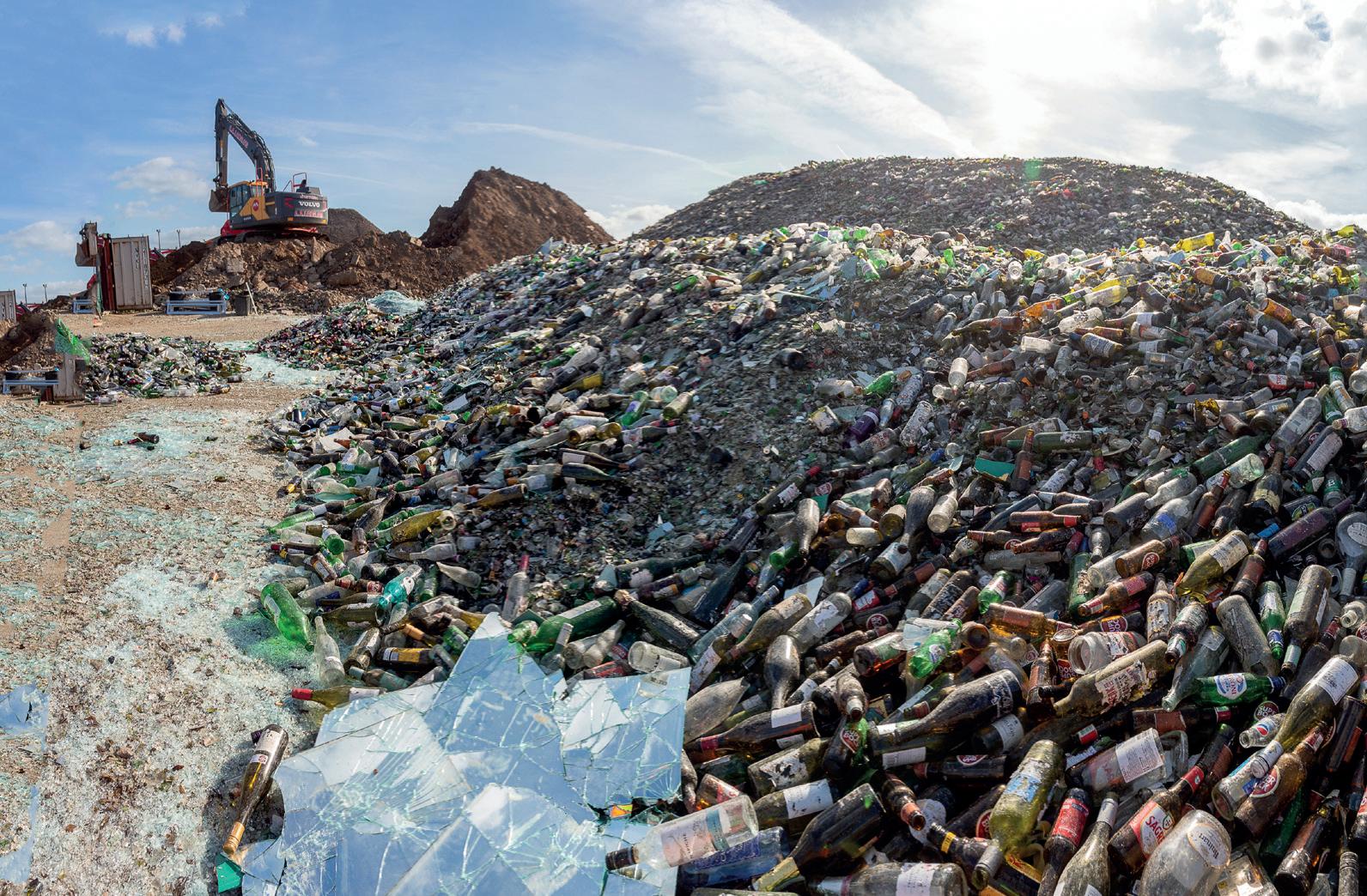
Finding order in chaos
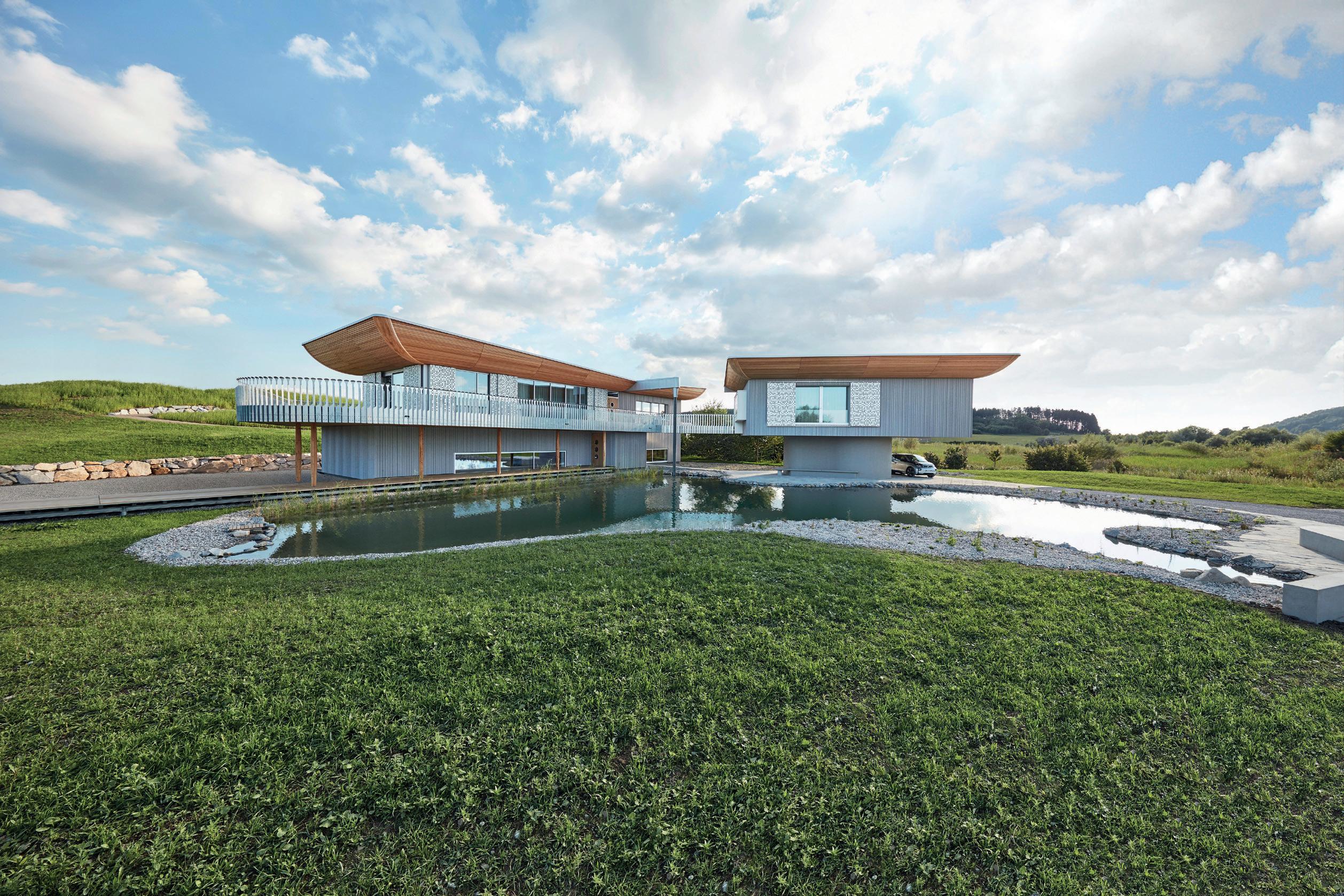
Haussicht.
‘I believe that everything is designed. The most important thing about this statement is that you must be conscious about it and see how your feelings react to design, spaces, and materials’ - Alfredo Häberli
The Baufritz podcast is a guide for everyone who wants clarity in their house design process. Internationally renowned Swiss Argentinian designer Alfredo Häberli explains his ideas and experiences when tackling architectural design by providing real life examples from his two Baufritz projects ‘Haussicht’ and ‘Waldsicht’.
When he was a young man, an uncle lived with his family while studying architecture. It left a lasting question in Alfedo’s mind: ‘How would it be to design a house? Following in the footsteps of Ray and Charles Eames and their house in Santa Monica, could it be possible to be both an architect and a designer?’ Having built his reputation as an industrial designer, he certainly understood design of products, so are these skills interchangeable? A joining of dreams between Baufritz CEO Dagmar Fritz-Kramer and Alfredo through a common vision, started the creation of Baufritz model house Haussicht (seeing the future of the house).
He says: ‘Finding order in the Chaos, is what I try to do as a designer and to find a logical way through the complexity and thus, at the end. to have some real product.’
Searching around for inspiration, Haussicht was inspired by the design of an ocean liner, where the lower decks provide sleeping cabins and the upper floors are reserved as living space, providing the best views of the oceans - a reverse of the norm. Apart from the real views Haussicht also represents the views into the future taken by Baufritz with this far-reaching vision of housebuilding. The highlight in the living room is a ‘seating island’ that defines the room as its main furniture.
“Finding
On a turn-table of three metres, across one may sit as in a cinema on different levels, either facing into the room or towards the media wall. Thanks to a variable table and various seating options, a multitude of communicative arrangements are possible among the family and guests.’
Waldsicht, which translates as ‘Forest View’, underlines the natural element crucial to the development of the building - the woodland immediately adjacent to the chosen plot of land. Alfredo said: ‘We have again seen that ecology and design are not contradictory - in fact quite the opposite. Design creates added value. Diverse structures, surfaces and materials create a variety of forms and colours that I interpret as a direct response to the house's ever-changing natural surroundings.
‘The clients wanted a detached home for a family of four: two children's rooms, a generous master bedroom, a study with a library, a niche for guests, an elevated deck with morning sun and a second elevated evening deck. These wishes were fully implemented by means of spaces that employed the same design language as Haussicht. Waldsicht was conceived from the inside out, from the desired look and feel of the rooms to the overall architecture of the building.
“Design creates
Waldsicht. ‘As a first-time house builder how can you approach this enormous task? To start with, what does the everyday life of the person, the couple, the family, look like? Try to find their needs, their interests, and how they live their life. Really, what kind of feeling do they want to have while living in their house? This is the context that then sets up the design.
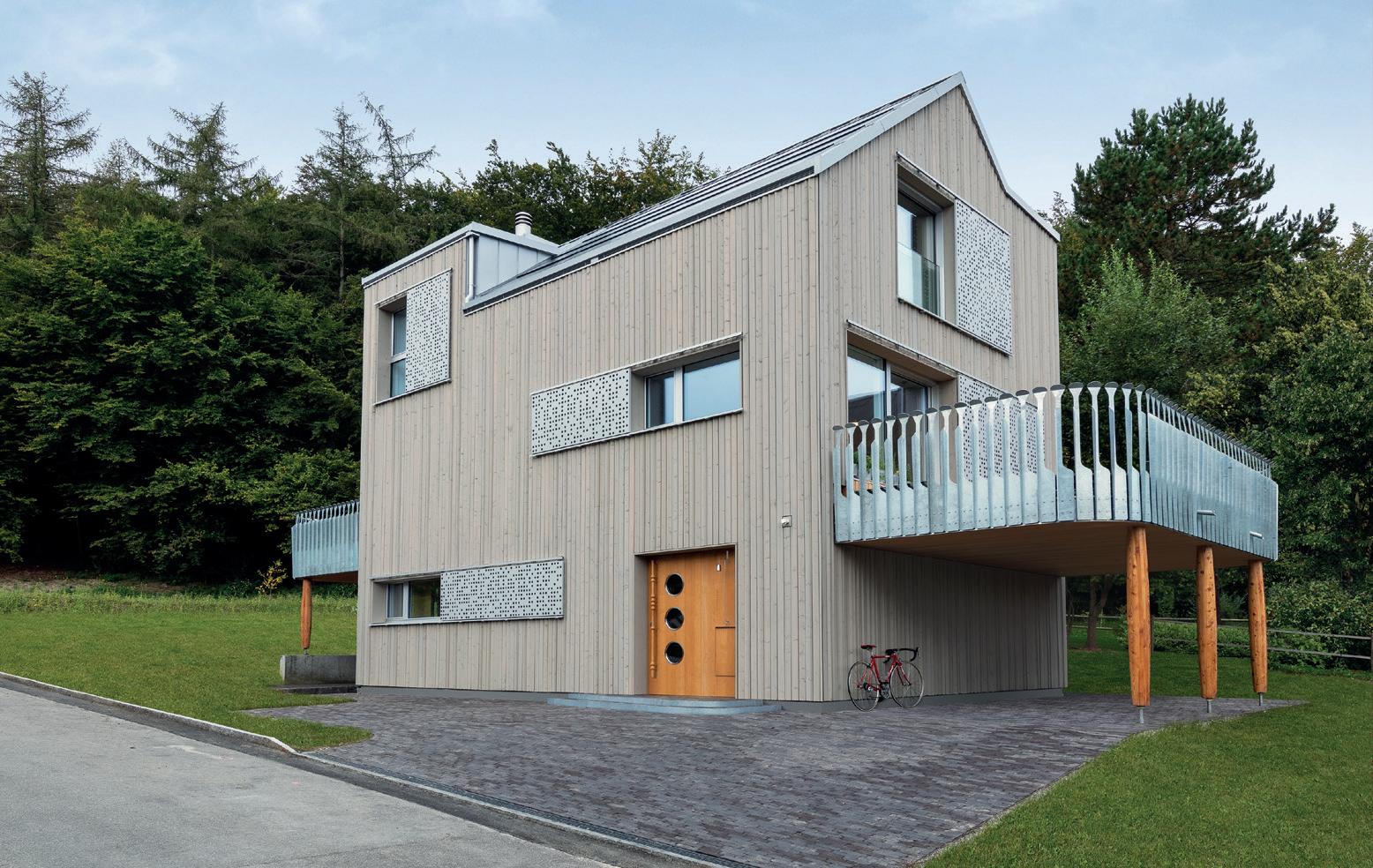
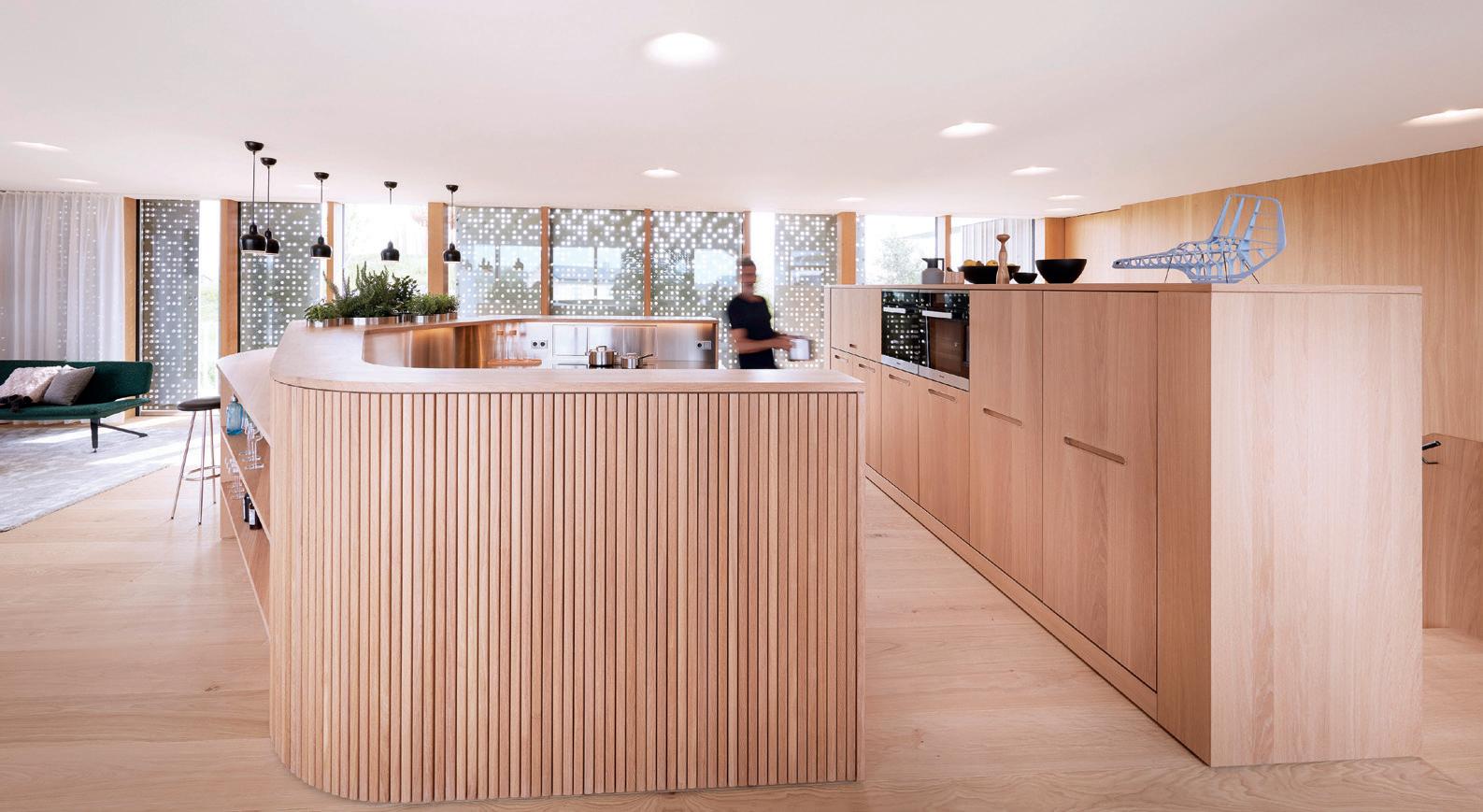
‘What people do not realise is that there are many decisions which must be taken when designing a house and this requires a lot of time. You need to have this time available. But working with Baufritz helps as there is a process supporting you throughout the build; it is important to trust a company. I had fantastic professionals working with me.’
Baufritz invites you to listen to Alfredo Häberli’s full podcast and hopefully you can draw design inspiration from his experiences.










